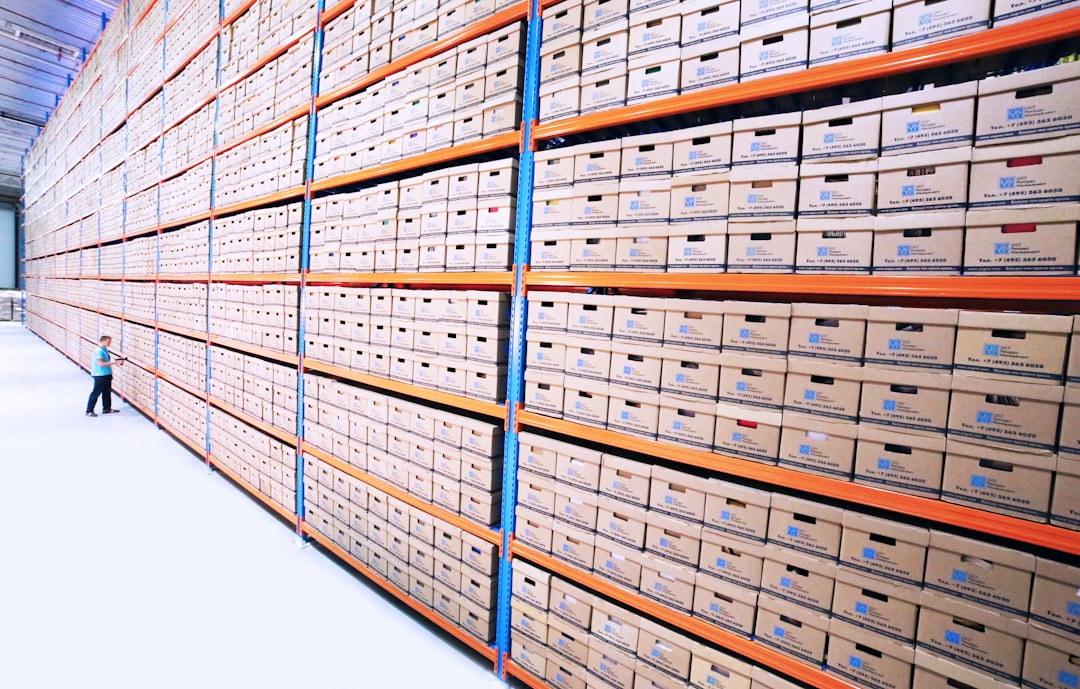
How To Prevent Overstocking in a Warehouse
July 10, 2023 - Warehousing
Efficient warehouse management is essential for businesses to maintain smooth operations, meet customer demands, and minimise unnecessary expenses.
One of the most common challenges faced by warehouse managers is overstocking, which can lead to increased carrying costs, reduced space availability, and potential losses due to obsolescence.
In this post, we will explore effective strategies and best practices to prevent overstocking in a warehouse.
Why Is Overstocking a Problem?
Overstocking presents numerous challenges for businesses, including but not limited to:
- Increased carrying costs: Overstock means more inventory to store, leading to increased costs for storage, insurance, and maintenance.
- Reduced space availability: Overstocked items occupy valuable storage space that could be utilised for other essential goods or operations, causing inefficiencies in warehouse layouts.
- Potential for obsolescence: Products, especially those with a limited shelf life, may become outdated, damaged, or spoiled if overstocked for excessive periods. This results in losses and waste.
- Decreased cash flow: Money invested in overstock is essentially tied up, reducing available capital for other business needs.
- Higher risk of theft or damage: Overstocking can make inventory control more challenging, increasing the risk of items being lost, stolen, or damaged.
- Decreased sales turnover: Excessive stock levels can lead to lower sales turnover rates, negatively impacting business profitability.
With these issues in mind, it is clear that businesses must take steps to prevent overstocking in their warehouses.
Tips for Preventing Overstocking
Here are several strategies to help you avoid overstocking and manage inventory levels more effectively:
1. Demand Forecasting and Inventory Planning
Accurate demand forecasting is the foundation of preventing overstocking in a warehouse. By analysing historical sales data, market trends, and customer behaviour, warehouse managers can better predict future demand. Implementing robust inventory planning software can aid in calculating the optimal stock levels, reorder points, and safety stock requirements.
2. Embrace Just-In-Time (JIT) Inventory Management
Just-In-Time (JIT) inventory management is a lean approach where inventory is ordered and received only when needed for production or customer fulfilment. By reducing excess stock and relying on frequent small deliveries, JIT helps prevent overstocking and minimises carrying costs. However, implementing JIT requires close collaboration with suppliers to ensure timely deliveries.
3. Set Par Levels
Establishing par levels or minimum stock thresholds for each product is an effective way to prevent overstocking. When the stock level falls below the predetermined par level, it triggers a restocking order. Par levels should be adjusted based on demand fluctuations and sales patterns.
4. Conduct Regular Stock Audits
Regular stock audits are essential to maintaining inventory accuracy and identifying potential overstocked items. By comparing physical stock levels to recorded data, discrepancies can be addressed promptly. This process helps optimise inventory turnover and ensures that products are replenished only when needed.
5. Implement a First-In, First-Out (FIFO) System
A First-In, First-Out (FIFO) system ensures that older inventory is used or sold before newer stock, reducing the risk of obsolescence and preventing overstocking of items that are less likely to sell quickly. Warehouse managers can achieve this by organising products in a way that facilitates proper stock rotation.
6. Monitor Sales and Stock Performance Metrics
Implementing a set of key performance indicators (KPIs) related to inventory turnover, sell-through rate, and stock-to-sales ratio can provide valuable insights into warehouse efficiency. Regularly monitor these metrics to detect potential overstocking issues and take corrective actions promptly.
7. Collaborate with Suppliers
Maintaining open lines of communication with suppliers is crucial in preventing overstocking. Suppliers should be informed of changes in demand or sales forecasts so that they can adjust their shipments accordingly. Strong relationships with suppliers can lead to better terms, shorter lead times, and improved inventory management.
8. Consider Seasonal and Promotional Fluctuations
Anticipating seasonal fluctuations and promotional activities is vital for preventing overstocking. Adjust inventory levels based on historical data and market trends to meet increased demand during peak seasons without incurring excess stock during slower periods.
9. Implement ABC Analysis for Inventory Classification
ABC Analysis categorises inventory into three groups based on their value and significance. Class A items are high-value products with low sales volume, Class B items have moderate value and sales volume, and Class C items are low-value products with high sales volume. By using this classification, warehouse managers can prioritise their attention on managing Class A items more closely, reducing the risk of overstocking high-value products with slow turnover.
10. Optimise Warehouse Layout and Space Utilisation
Efficient warehouse layout and space utilisation play a critical role in preventing overstocking. Design the warehouse layout in a way that minimises travel time for picking and restocking. Utilise vertical storage space with racks and shelves to make the most of available rooms. Adopting slotting techniques to store fast-moving items closer to the shipping area can further enhance efficiency.
11. Utilise Data Analytics and Artificial Intelligence
Leverage data analytics and artificial intelligence (AI) to gain deeper insights into demand patterns, customer behaviour, and inventory performance. Advanced AI algorithms can help in more accurate demand forecasting and detecting potential overstocking risks in real time. Data-driven decision-making allows warehouse managers to proactively adjust inventory levels and prevent stockouts or excess stock situations.
12. Establish a Product Return Management Process
Returns are a part of every business, and having a clear product return management process is essential to prevent overstocking due to unsellable items. Properly assess returned products and determine if they can be resold, returned to suppliers, or disposed of. An efficient return management process reduces the chances of overstocking unwanted or damaged goods.
13. Train Warehouse Staff on Inventory Management
Effective warehouse management requires a well-trained and informed workforce. Conduct regular training sessions for warehouse staff to educate them about inventory management best practices, stock rotation, and the importance of accurate record-keeping. Empowering employees with knowledge and skills ensures they contribute to preventing overstocking and maintaining efficient warehouse operations.
14. Monitor External Market Factors
External market factors, such as changes in consumer preferences, economic conditions, or industry trends, can influence demand and impact inventory levels. Stay vigilant about market changes and adapt inventory planning accordingly to prevent overstocking or stockouts.
15. Conduct Regular Supplier Performance Reviews
Regularly assess supplier performance to ensure they meet delivery timelines and maintain product quality. Evaluate suppliers based on their ability to accommodate fluctuations in demand and their willingness to cooperate in adjusting inventory levels. Strong supplier relationships can prevent overstocking caused by delays or unreliable deliveries.
16. Emphasise Collaboration between Sales and Warehouse Teams
Promote effective communication and collaboration between the sales and warehouse teams. The sales team can provide valuable insights into changing customer demands and upcoming promotions, enabling the warehouse team to adjust inventory levels accordingly and prevent overstocking or stockouts.
Conclusion
Preventing overstocking in a warehouse is a multifaceted process that requires a combination of accurate demand forecasting, strategic inventory planning, efficient stock management, and strong supplier relationships.
By adopting these best practices and leveraging technology, warehouse managers can strike the right balance between meeting customer demands and optimising inventory levels, ultimately leading to increased profitability and streamlined operations.
At Brand Services, we can help you streamline your inventory management processes to ensure optimal stock levels and prevent overstocking. Our team of experts will provide you with tailored solutions that are tailored to the specific needs of your business, helping you maximise efficiency and reduce costs. For more information about our services, contact us today!
Frequently Asked Questions (FAQs)
What are the risks of overstocking in a warehouse?
Overstocking can lead to increased carrying costs, reduced warehouse space, higher chances of product obsolescence, and difficulties in managing inventory turnover. Additionally, funds tied up in excess stock could be better utilised elsewhere in the business.
How can technology help prevent overstocking?
Warehouse management systems (WMS), demand forecasting software, and inventory planning tools can streamline operations, enhance inventory accuracy, and provide real-time data for informed decision-making. Embracing technology can optimise inventory levels and prevent overstocking.
How often should stock audits be conducted?
Stock audits should be conducted regularly, depending on the size of the warehouse and the turnover rate of the products. Conducting audits on a quarterly or biannual basis is a common practice to maintain inventory accuracy.
Is overstocking always a bad thing?
While maintaining a safety stock is essential, excessive overstocking can be detrimental to a business. Overstocked items tie up capital, occupy valuable storage space, and may become obsolete before they can be sold, leading to financial losses.


